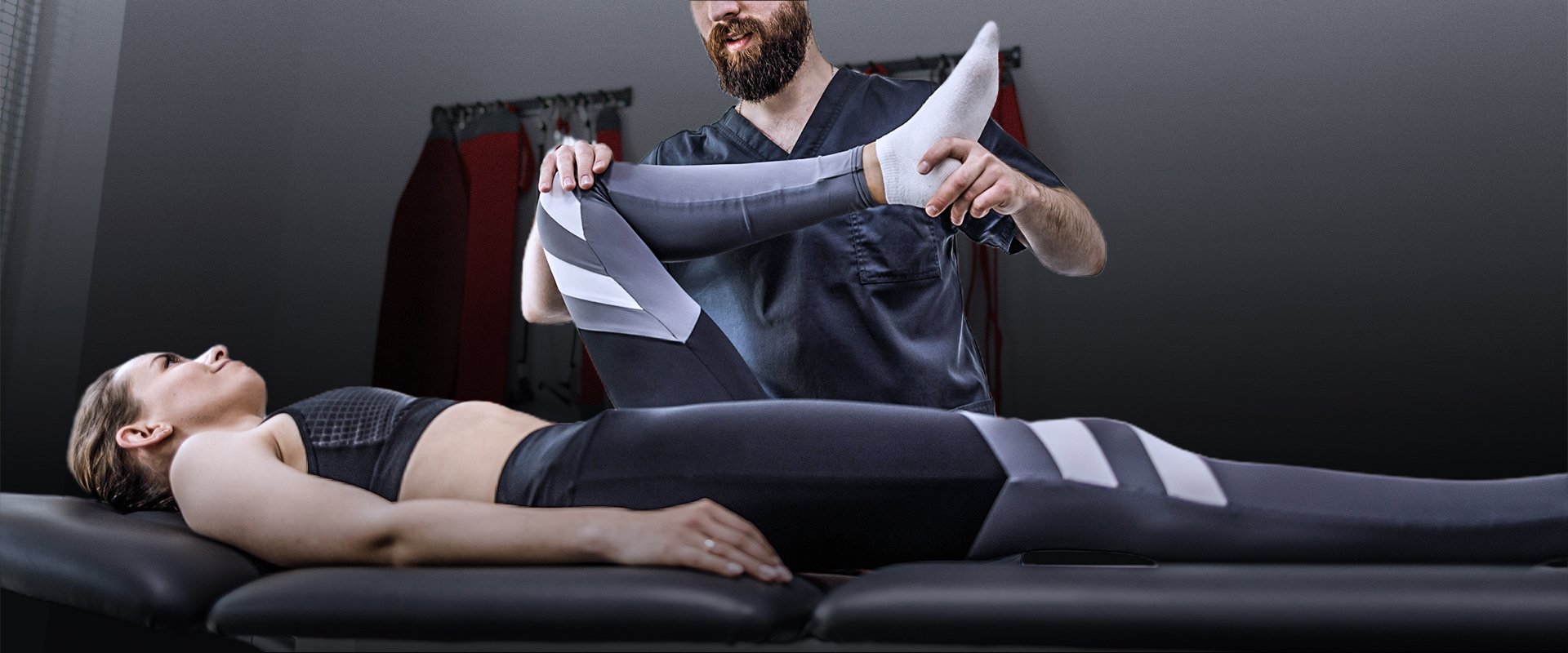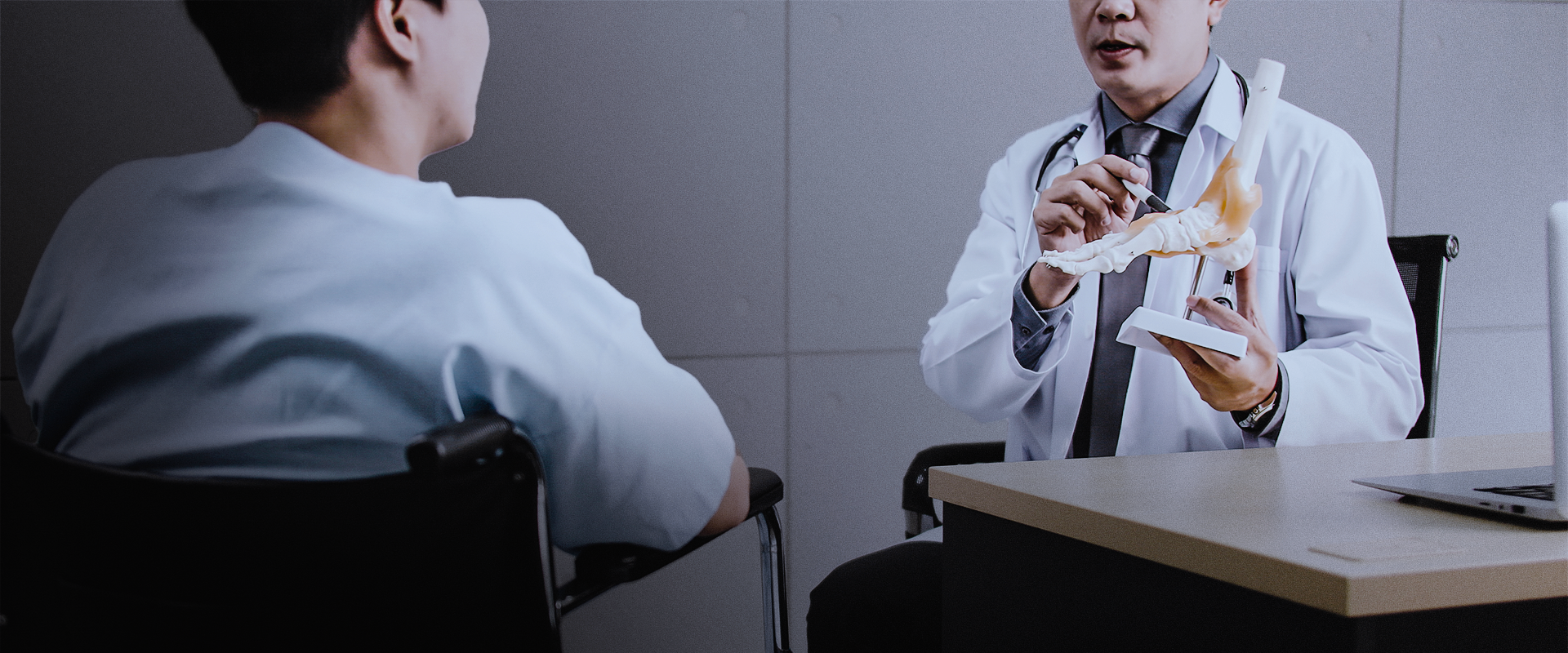
Physical Therapy for Pinched Nerve in foot
AT EVOLVE
Physical Therapy for Pinched Nerve in foot
HOW CAN PHYSICAL THERAPY HELP A PINCHED NERVE IN YOUR FOOT?
Numbness, tingling, burning or shooting pain can be caused by nerve compression. Many people are familiar with pinched nerves in the neck or back but nerve compression can happen in other body parts as well. In the foot, there are several major nerves that when pinched or irritated can cause numbness, tingling or discomfort in different areas of the foot. The main goal of treatment for a pinched foot nerve is to relieve its compression and restore function in the foot. Physical therapists are movement experts with a deep understanding of the musculoskeletal system. Our team of therapists will evaluate the symptoms of a pinched foot nerve and devise an individualized treatment plan to address your symptoms.
WHAT DOES PHYSICAL THERAPY TREATMENT FOR A PINCHED FOOT NERVE LOOK LIKE?
Physical therapy treatments for a pinched nerve in the foot are aimed at reducing symptoms of pain, burning, numbness and tingling by reducing nerve compression, improving muscle strength, addressing underlying factors and facilitating return to full activity. My team of therapists and I will start by getting to know your concerns and goals and performing a thorough physical exam of your foot while identifying factors that may be contributing to the nerve compression. Your therapist may then employ manual therapy interventions to target joint and tissue mobility while also prescribing movements and exercises for nerve mobility, muscle strength and motor control to be performed in the home and the clinic.
HOW LONG WILL I NEED PHYSICAL THERAPY?
The duration of your physical therapy plan of care will vary depending on the severity of symptoms, what is causing the compression as well as the types of activities you aim to resume. While full resolution of symptoms can take some time, you may begin to see some results fairly quickly. You should experience some improvements in many symptoms such as pain, numbness and tingling within a couple of weeks though full return to pain-free activities will likely take longer. Achieving long-lasting results may take some time, but dedication to your program will not only help you achieve these results but will help to decrease the likelihood of symptoms recurring in the future.
NERVE COMPRESSION IN THE FOOT
Nerve compression can be caused by swelling from an injury, anatomical variations or changes in foot structure, tumors or even by movement or biomechanical errors in the foot, among other things. All the nerves in your foot originate at the spinal cord and travel through the leg down to the foot as peripheral nerves. These nerves bisect and split at various points and carry both sensation and motor commands to the skin, joints and muscles. Because nerves travel long distances to reach the foot, symptoms of a pinched nerve in the foot can originate from much higher up in the leg.
Several common nerve compression conditions cause symptoms in the foot. One important goal of your physical therapy evaluation is determining where your symptoms originate including ruling out radiating symptoms from the spine. Below are descriptions of some conditions involving pinched nerves in the foot.
TARSAL TUNNEL SYNDROME
Tarsal Tunnel Syndrome refers to compression of the posterior tibial nerve as it runs through a space called the tarsal tunnel on the inside of the ankle. Quite a few important structures run through the tarsal tunnel including:
- Tibialis posterior tendon
- Flexor digitorum longus tendon
- Posterior tibial artery & vein
- Tibial nerve
- Flexor hallucis longus tendon
ANTERIOR TARSAL TUNNEL SYNDROME
Compression of the deep peroneal nerve is rare but is commonly referred to as anterior tarsal tunnel syndrome. Weakness in the foot and toes and pain or sensory changes in the foot near the webspace of the first and second toes are also characteristic of compression of this nerve. Causes of this nerve compression range from space occupying lesion such as a ganglion cyst, osteophytes on the bone or hypertrophy of overlying muscles to extrinsic causes such as a tight-fitting shoe, a traction injury from an ankle sprain and even repetitive ankle plantarflexion such as during dancing or soccer.
SINUS TARSI SYNDROME: The sinus tarsi is located on the outside aspect of the foot in front of the ankle. When swelling, irritation or compression of the sinus tarsi occurs, the nerves that travel through there can be pinched causing burning, numbness or tingling radiating out from that area.
MORTON’S NEUROMA: A morton’s neuroma is a bit different than the other nerve compression conditions discussed above. However, since this condition can feel similar to nerve compression it is worth mentioning. Morton’s neuroma is inflammation of one of the nerves of the foot between the long bones, behind the toes. People with Morton’s neuroma often feel like they are standing on a marble. Pain is the most common symptom but numbness and tingling in the area can also occur.
PLANTAR NERVE ENTRAPMENT: Caused by compression or entrapment of the plantar nerve, this condition can sometimes be confused with plantar fasciitis. Unlike plantar fasciitis which improves with rest and is usually the worst when you first put pressure on the foot in the morning, plantar nerve entrapment causes a burning heel pain that persists even at rest. It is often worse at night and can increase with stretching or standing activities.
End Injury Progression
Physical Therapy for a pinched nerve in foot has proven to prevent injury, slow and even stop pain issues, improve performance, and reverse injury progression in many cases.
Relieve Pain
The movements used in this technique can target your entire body helping you to manage discomfort and pain during the course of your physical therapy treatments.
Improve Range of Motion
Posture awareness is an important area to focus on due to the fact that certain positions may cause you further discomfort and pain.
Restore Mobility
You can regain mobility and flexibility by taking part in the stretches and exercises as prescribed by your physical therapist.
How Long Will Physical Therapy for Pinched Nerve in Foot Last?
If you decide to work with a physical therapist to help correct your pinched nerve in foot, your entire treatment plan could consist of around 8-20+ different physical therapy sessions that will each last 60-90 minutes. Once you complete your customized physical therapy treatment plan, you will be able to continue to do the prescribed stretches and exercises utilized during your PT sessions yet in the comfort of your own home.
DIAGNOSIS AND TREATMENT OF FOOT NERVE COMPRESSION
Diagnosis of nerve compressions in the foot is often based on clinical signs and symptoms as well as provocative tests such as the Tinel’s sign wherein the therapist taps on the involved nerve over the compressed area and it reproduces your primary symptoms. EMG studies, X-rays, ultrasound, CT scans or MRIs can also be used to look for abnormalities in bone structure, signs of inflammation or space-occupying lesions.
If you have nerve compression or a Morton’s neuroma, a conservative approach is usually recommended first. Your physician may prescribe a course of nonsteroidal anti-inflammatory or pain medications or a corticosteroid injection to manage pain and inflammation. Your physical therapist will then work to reduce compression, improve foot and ankle biomechanics and so forth to reduce your symptoms. In the case where conservative therapy does not fully address the nerve compression, surgery may be recommended by your doctor to relieve the remaining compression on the nerve.
WHAT PHYSICAL THERAPY TREATMENTS ARE BEST FOR A PINCHED FOOT NERVE?
While physical therapy for these conditions will always be individualized to your specific needs, below are some common goals and treatments of physical therapy to manage nerve compression in the foot:
TREATMENT TO REDUCE INFLAMMATION: modalities like ice, ultrasound, contrast baths or iontophoresis may be used to reduce inflammation or swelling around a nerve or injured tissue
NERVE AND TISSUE MOBILITY EXERCISES: nerve mobilization and soft tissue mobilization techniques are often used to reduce nerve compression, improve blood flow and nerve mobility
ORTHOTICS, FOOTWEAR AND TAPING: foot orthotics, heel wedges, footwear and lacing modifications and taping may be used to improve foot biomechanics and reduce compression during standing and walking
STRETCHING: Calf and other muscle stretching is often prescribed to improve muscle length
STRENGTHENING AND MOTOR CONTROL: Muscle strengthening of leg foot and ankle muscles, is often prescribed to help improve mechanics and control of the foot as are exercises to improve control of the foot
Symptoms of nerve compression in the foot can be uncomfortable and impact your ability to stand and walk. It is important to locate the cause of your symptoms before treating it. If you think you may have a pinched nerve in your foot, call Evolve Physical Therapy today to schedule an initial evaluation and let our team of therapists guide your recovery.
Mill Basin (located in Harbor Fitness)
6161 Strickland Ave
Brooklyn, NY 11234
Monday: 7am-8pm
Tuesday: 7am-8pm
Wednesday: 8am-5pm
Thursday: 7am-8pm
Friday: 8am-1pm
Park Slope (located in Harbor Fitness)
550 5th Ave.
Brooklyn, NY 11215
Monday: 9am-8pm
Tuesday: 8am-6pm
Wednesday: 9am-8pm
Thursday: 8am-6pm
Friday: 8am-3pm
Gravesend
372 Avenue U
Brooklyn, NY 11223
Monday-Thursday: 8am-8pm
Friday: 8am-3pm
Kings Highway
945 Kings Highway
Brooklyn, NY 11223
Monday-Wed.: 12pm-8pm
Ready to take the next step to a healthier you?
Contact Us Today!
PHYSICAL THERAPY FOR PINCHED NERVE IN FOOT
Need Physical therapy for a pinched nerve in foot?
Let our caring and compassionate physical therapists help you with relieving pain while getting you back on your feet comfortably.
Call now to schedule your first PT consultation free of charge.
Call: 1-718-690-3229







